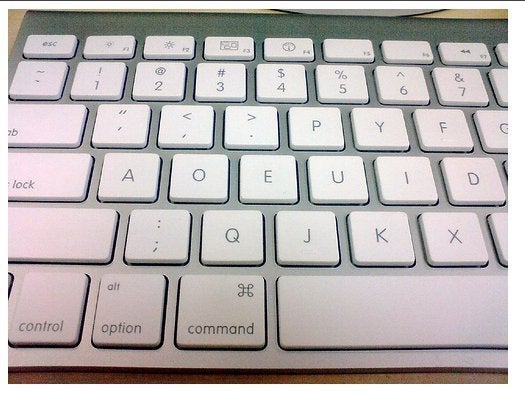
We punch short messages into iPhones and Blackberries and use touch typing methods to write longer missives on computer keyboards. After two to five years, these devices are all considered hopelessly out of date, yet these technological inventions employ a keyboard that was designed for reasons that were applicable to the late 19th century, and the keyboard has changed very little since then.
The design of the keyboard was patented by one of the inventors of the first typewriter, a fellow named Christopher Sholes, a newspaper editor and printer who lived in Milwaukee, who worked with his friends Samuel W. Soule and Carlos Glidden, to create a writing machine. A patent for the fellows' invention was given in 1867, but Sholes kept tinkering with the keyboard to overcome the continuing problem of the typewriter keys jamming.
In the original design, the layout was in ABC fashion, but this system wasn't working efficiently. Amos Densmore, and educator and brother of Sholes' main investor, conducted a study of letter pairings and came up with information that led Sholes to create what we now know as the QWERTY keyboard (so-called for the first 6 letters on the top row of letters on the keyboard), which was added to his patent for improvements on the typewriter in 1878.
Anyone who has ever used a manual typewriter remembers that the keys do jam occasionally, but the QWERTY layout permitted a better system for key usage, and it reduced the need for typists to stop to reach in to the machine to unjam the keys.
In 1873 the manufacturing rights to the "Sholes-Glidden Type Writer" was sold to E. Remington & Sons, and the keyboard was slightly modified by the company's mechanics. It is believed that the final design was selected because the words TYPE WRITER can be written using just one row of the keyboard, and this enabled salesmen to impress customers as they quickly pecked out "typewriter."
The original keyboard designed by Sholes lacked most punctuation marks as well as a key for zero and one. Typists were expected to use a lower case l for a one, and an uppercase O for zero. An exclamation point could be made by using a three-stroke combination involving an apostrophe, a backspace and a period. (M, C, and X were also in slightly different locations than today's keyboards.)
At the start, everyone typed via hunt-and-peck, so no one gave any thought to the convenience of the layout. The invention and certainly the popularization of touch typing came about when a Salt Lake City court stenographer by the name of Frank Edgar McGurrin started winning typing contests, which were very popular then. Through McGurrin's continued success, his touch typing method and the Remington keyboard layout he used gained in popularity.
Though the mechanics of a typewriter are long gone and we now have keyboards that instruct computer software, the original layout persists. In 1936 the Dvorak keyboard was patented by August Dvorak, and while it permits users to type approximately 400 of the most common words in the English language with one's hands still on the home keys (as opposed to QWERTY's 100 words from the home keys), two business professors, Stan Liebowitz and Stephen E. Margolis, debunked the theory that was put forward in the 1940s and '50s that the time saved by typists using the Dvorak keyboard would more than make up for the time spent re-training typists who learned the QWERTY system. According to an article, "Typing Errors," co-authored by the professors http://http://findarticles.com/p/articles/mi_m1568/is_n2_v28/ai_18420079/?tag=content;col1, there is no new system that would realize enough cost savings to merit the use of a different keyboard. Despite the fact that "a" is under our weakest finger, and the most-used letter "e" is off the home row, people adapt, and those who are going to become fast typists will do so regardless of layout.
So here we are with a classic, "The more things change the more they stay the same..."
As you type notes on the keyboard on your Kindle, send text messages using your phone, and work at your computer, just think about the fact that the basic design was the result of the efficiency of mechanical typewriter keys more than 100 years ago. Gotta love it.
If you would like to read about oddities of our work lives of the past, send me an e-mail for a short newsletter on the topic. kkelly@katekelly.cokkelly@katekelly.comm. Put Office in the subject line.
Included is a fast fact about why people who were considering a typewriter purchase (the olden days) always tested a machine by typing "The quick brown fox jumps over the lazy dog."
